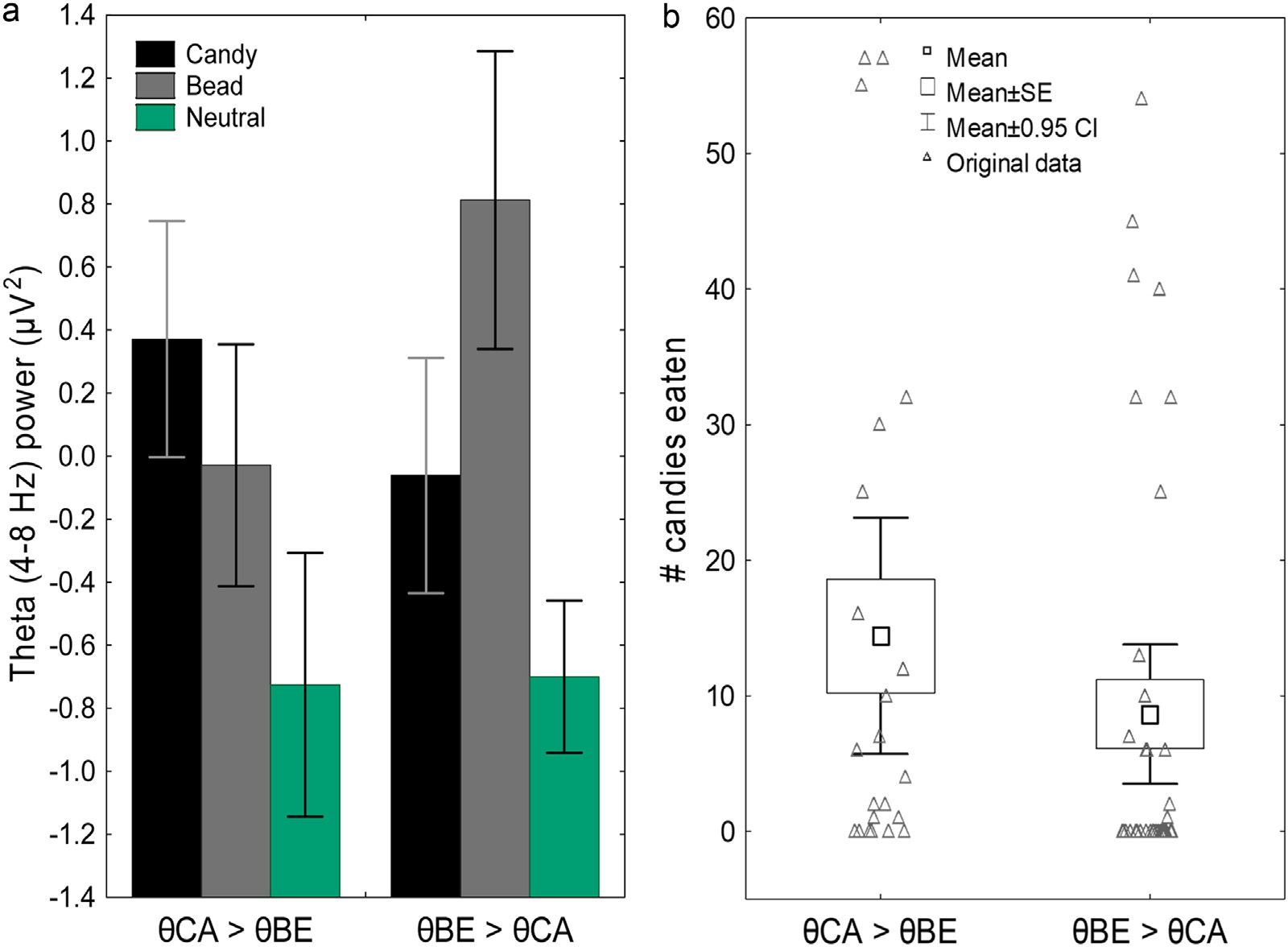Fig. 5.

We found that individual differences in theta power during food-related decision-making were predictive of cue-induced eating. (A) K-means clustering of theta power data identified two groups: one with higher theta power for the candy condition than for the bead condition (θCA>θBE group) and one with higher theta power for the bead condition than for the candy condition (θBE>θCA group). Error bars: 95% CIs. (B) The θCA>θBE group ate significantly more candies during the cued food delivery task than did the θBE>θCA group. SE: standard error. Error bars: 95% CI.
